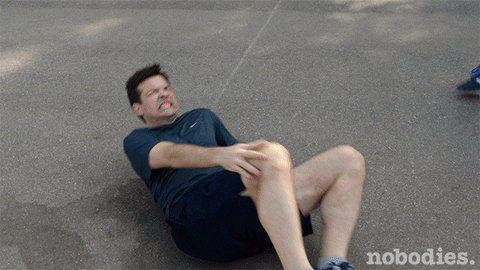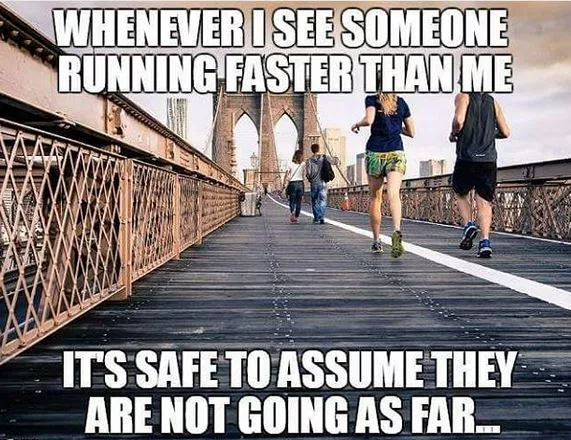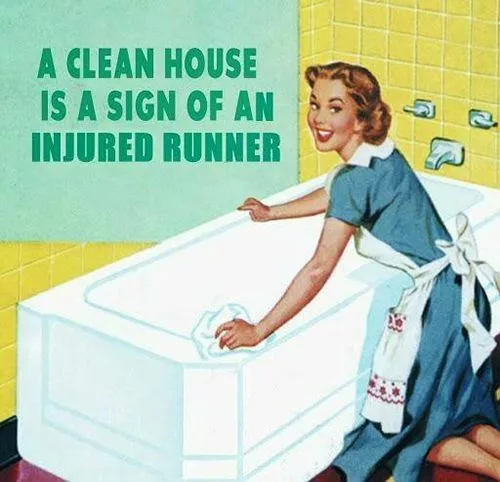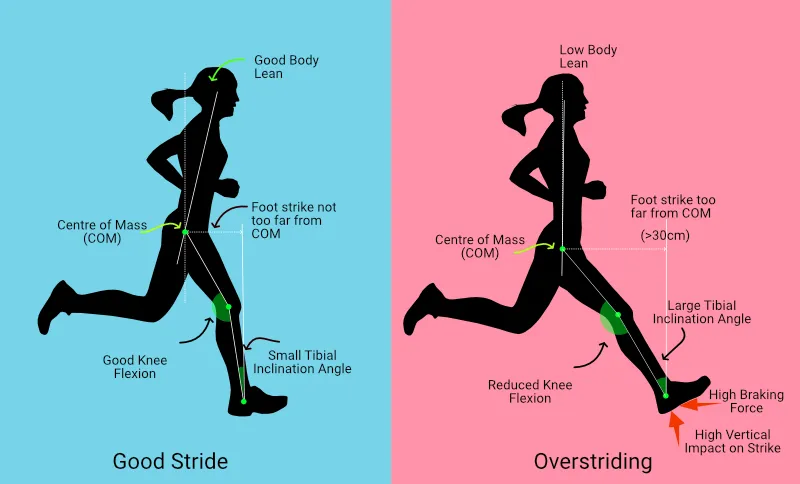Ever feel like this after a run?

Injuries aside, running is flat out awesome! It builds your muscles, strengthens your heart, helps you breathe better, chills you out, and offers an opportunity to hang with some friends. It’s the ultimate “no-brainer” workout, because you can do it anytime, anywhere! You just put one foot in front of the other and away you go! Not to mention all the fun runs that pop up around town like all the 5ks, turkey trots, beer runs, and run clubs. For those days when I prefer the simplicity of movement over structured gym workouts, I often opt for a refreshing run, and you should too.
But, hold up! Running isn’t all sunshine and rainbows. You can’t just go full speed ahead without a care in the world. Some of y’all have this thing we call the “Hollywood stride” – too long, too extra, too dramatic. In other words – your stride is way to dang long! And this longer stride can lead to a TON of different injuries. Now, what in the world does that even mean? Well if you want to understand the most common culprit to running injuries, keep on reading!

What happens when we overstride? According to Newton’s third law, the force exerted on the ground is mirrored back into our body. When we overstride, our foot lands too far ahead of our center of gravity, resulting in a greater force that puts increased strain on our ankles, knees, hips, and back. This landing style essentially involves the heel making initial contact with the ground (before the mid foot), creating a braking force, which counteracts the forward motion. Since running involves repetitive motion, this continual excessive strain on the joints can lead to wear and tear, ultimately slowing you down.

So, here’s the deal Charlotte runners. Pain is a byproduct of repetitive compensation created from when we land with our foot too far out in front of us. This is something that can be improved relatively automatically if you focus on higher step counts and landing on the midfoot. That way, when our foot contacts the ground, the force goes directly down to the earth and not backward in poor directions through the joints.
How can you be conscious of this if you are not actually filming yourself running? The first step is to start pacing your steps by actually tracking the steps that you take. The gold standard for marathon runners is about 180 steps per minute. A sneaky cheatcode to emulate that is to use a Spotify playlist pace set at 180bpm. Most people hang out around 156 steps per minute (or longer stride length), and even a 10% increase in cadence can have a huge difference. Check out the pic below to see the “before and after” of getting your stride game right.

So what are you waiting for? Embrace this newfound tempo, lace up those running shoes, and get back on the road with your running crew. Pain? It’s in the rearview mirror, my friend. While decreasing stride length takes care of many injuries, it doesn’t solve them all. We work with runners of all shapes and sizes all the time. If pain still nags you, don’t hesitate to drop us a line. We’re here to turn your running journey into a pain-free joyride. Charlote runners – keep on running!
PS – are you a runner dealing with a foot or ankle injury? Check out this and this blog to help out!
Thanks for reading,
Elizabeth Diaferia SPT

